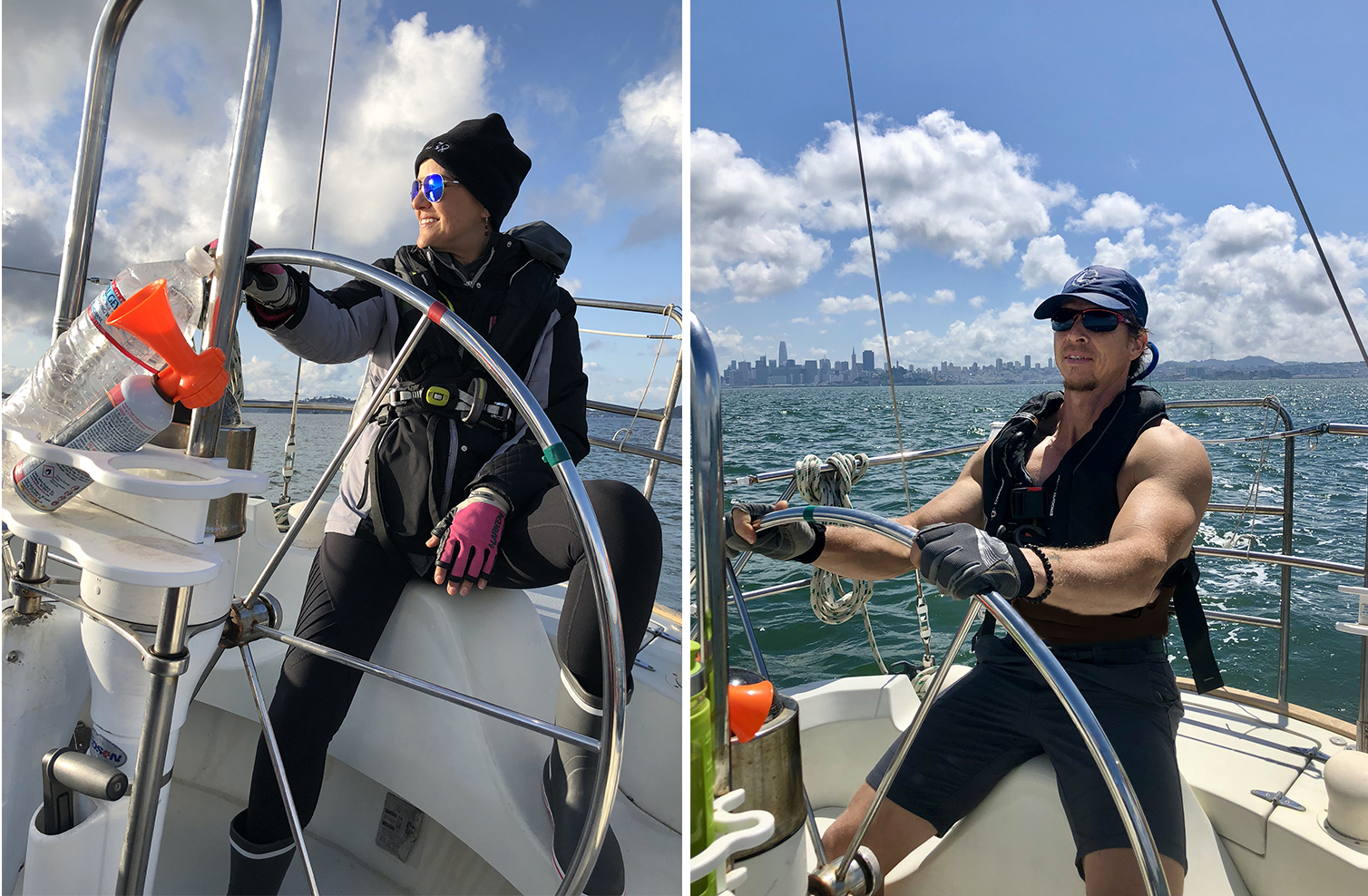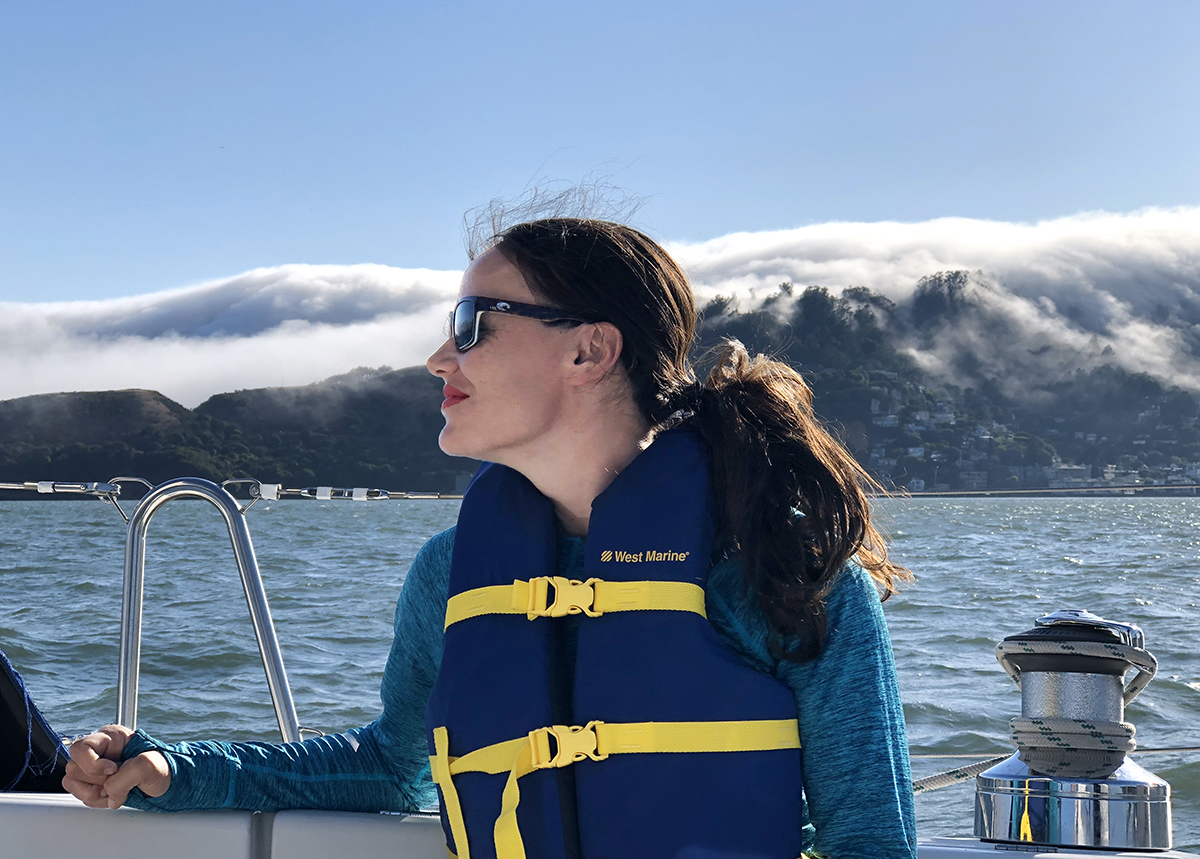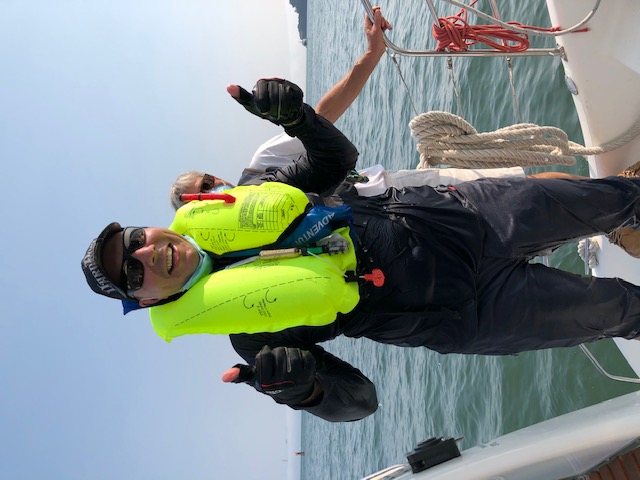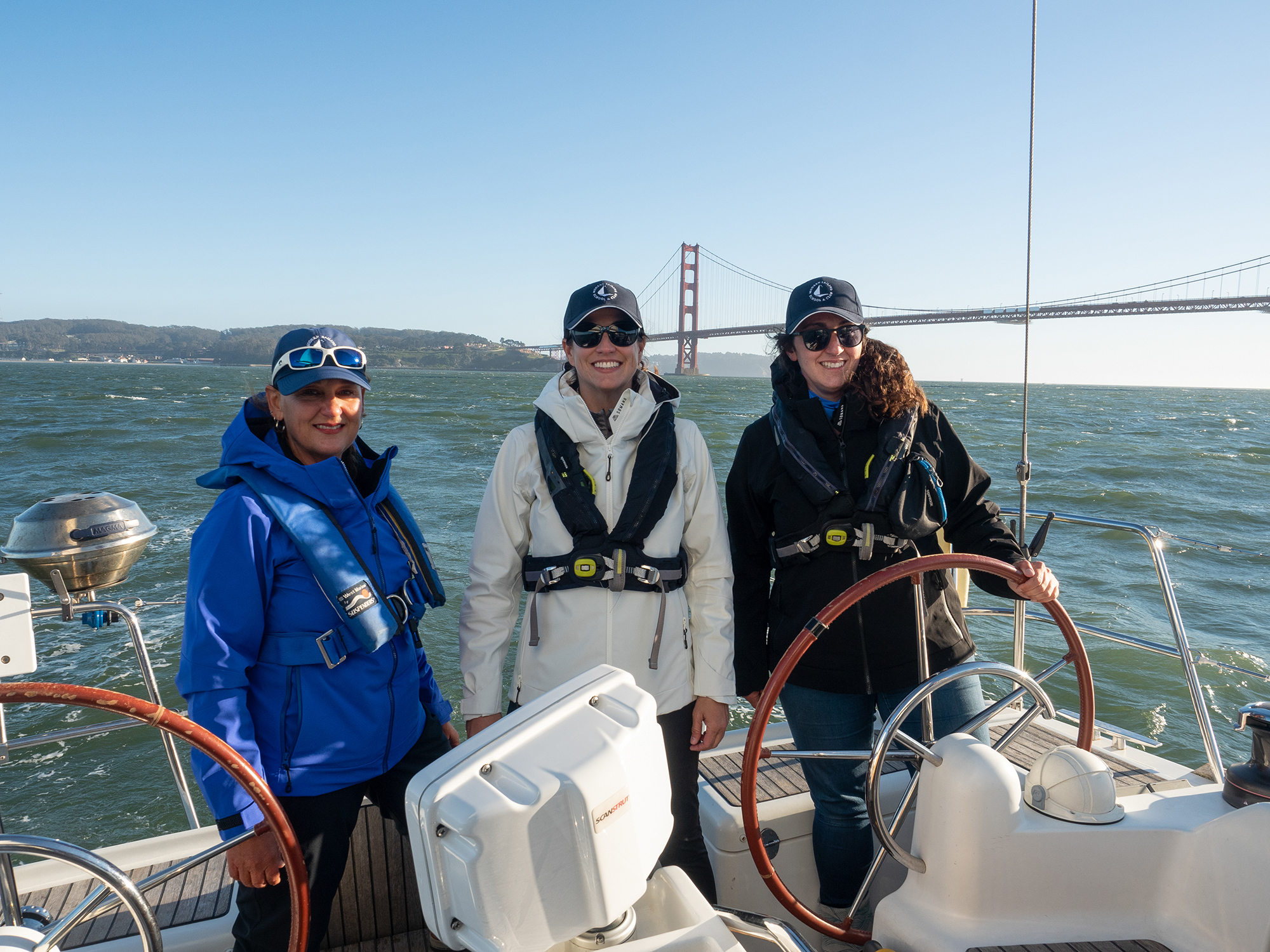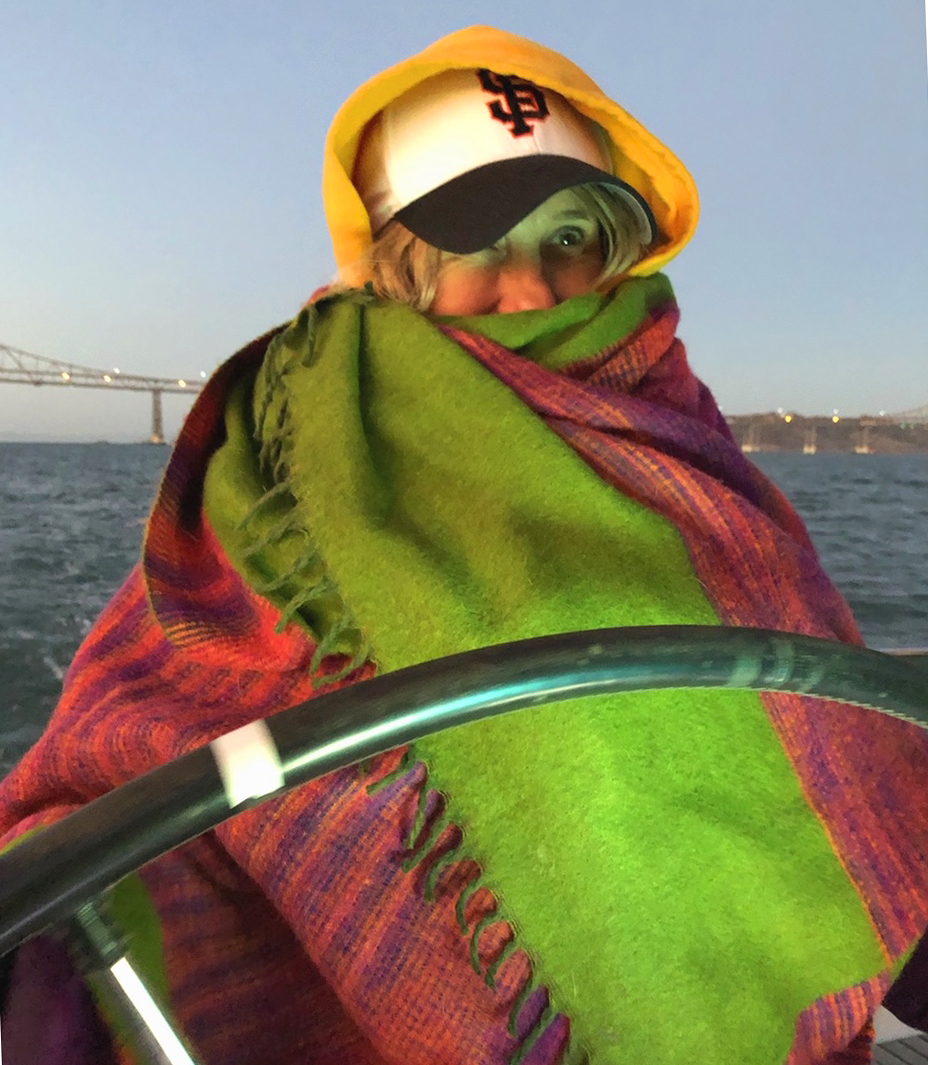
Even if Mark Twain didn't actually claim the coldest winter he'd ever experienced was a summer in San Francisco, there is a reason that myth has hung around this long. Ill-prepared tourists learn this rather quickly, surprised a California coastal town isn't colored by Aperol Spritzers and boat neck shirts. Our Modern Sailing members and students know the secret to a great day on the water - no matter the time of year - is layers and windproof fabric. The winds and temperatures throughout the Bay can vary widely. With dozens of microclimates around the Bay, on any given day, you can find yourself needing to add or remove layers of clothing whenever location, point of sail, windspeed, cloud cover, or time of day changes.
To further complicate things, each of us responds to temperatures in our environment differently and we all have our preferences where clothing is concerned. Some people tolerate cooler temps with no problem, while others find the Bay’s cooler temps difficult.
By following these three rules to dress for warmth and comfort on San Francisco Bay, just about anyone can sail comfortably all day, everywhere in the Bay.
- Know Yourself
- Know the Conditions
- Dress in Layers
RULE 1 – Know Yourself
The first rule of clothing for sailing San Francisco Bay is to know yourself and how well you tolerate certain temperatures. Everyone’s experience is different!
To demonstrate the degree in difference between people’s tolerances for cooler air. These photos of Mary (left) and Darren (right) of were taken only a few minutes apart, believe it or not. The forecasted high temperature for San Francisco that day was 62o F and the wind was about 12 knots.
RULE 2 – Know the Conditions
Conditions and temperatures around the Bay not only vary by location, but by season and time of day.
Seasonal and Daily Patterns
Summer / Early Fall
Summer breezes on the Bay are born from the clash between the cool ocean and the scorching Central Valley. The winds tend to be lightest in the morning, usually less than 10 knots. As the sun climbs, a low-pressure zone forms inland, drawing in the frigid Pacific air through the Golden Gate and Central Bay. This area known as the "Slot" unleashes powerful winds, often exceeding 15 knots and can feel downright chilly. While waves are usually manageable, a strong westerly against the ebb tide can create a thrilling, if wet, ride.
In the evening as the Central Valley cools, winds on the Bay begin to settle into a pleasant conclusion to the day’s sailing, making for somewhat easier docking or mooring in what’s left of the daylight.
In the early fall, you'll start to see some days of warm sunshine with lighter wind. For this reason, fall is the favorite time of year for many San Francisco Bay sailors.
Late Fall through Early Spring
Around November, breezes come more gently and often from the north and northeast. All your favorite anchorages that are well-protected in the summer can become untenable in the winter. On those sunnier days when winds are light, you can feel quite warm and forget it’s wintertime. Rainstorms tend to roll in with chilly, gusty, blustery, southwesterly, or westerly winds, although some winter storms come blasting with a north wind.
Spring
Mid to late March or early April, the marine layer “Karl” makes its first seasonal appearances. As the season progresses and valley temperatures rise, winds on the Bay become stronger again.
From day to day, the weather forecast can sometimes deviate drastically from the seasonal norms. Always check the weather, wind, and tidal predictions. Also, always be prepared for conditions that differ from the forecast. You’ll be ready for anything!
Check the Hourly Weather Forecast
The morning before you head to Modern Sailing, check the weather forecast, making note of the hourly temperatures, wind speeds, and wind direction. Be sure to plan for the both ends of the range.
Check the Tidal Predictions
When a strong wind is blowing opposite a tidal current, it can build up quite a chop on the Bay. Anytime you think you might be sailing in these conditions, bring your waterproof outer layers. If there is also a chance of rain and/or it’s going to be below 55 degrees, consider opting for your waterproof boots and cozy socks.
Regardless of the daily and seasonal patterns described here, follow the layering guidelines in Rule 3 year-round.
RULE 3 – Layer Clothing for Sailing
Pack essentials: base layer, mid-layer for warmth, and waterproof outer layer. Add layers as needed - it's harder to warm up once chilled.
Bring extras: socks, gloves, hat. You never know when the Bay will baptize you or when a crew member will need a warm, dry replacement.
After ASA 114 student Paul A. went for an unintended swim, he quickly realized the value of packing extra clothing. He was very glad he did!
First, let’s have a quick look at how to attire your extremities for sailing on San Francisco Bay.
Recommended Gear
- Head: Beanie, headband, or wide-brimmed hat with a leash. Neck gaiter optional.
- Hands: Sailing gloves (full and fingerless), hand warmers.
- Feet: Grippy shoes (deck shoes ideal), deck boots for wet conditions, cozy, breathable socks (wool is a great choice).
Base Layer:
Lightweight and breathable in warm weather (sleeveless shirt, T-shirt, long-sleeve), warmer in cooler conditions (long-sleeve, tights/leggings, hiking pants).
Mid-Layer:
Sweater, sweatshirt, fleece, or down jacket.
Outer Layer:
Waterproof jacket and pants (foulies) for extreme conditions. For your warmth layer(s), choose cozy and comfortable fabrics that breathe.
Three Wind & Women instructors model the Sømand Farallon Jacket, developed in the San Francisco Bay Area by women sailors for women sailors.
Foul weather gear can be expensive – and of course the better quality, the more it seems to cost. For this reason, we don’t recommend investing in good foul weather gear until you’re sure you're in love with sailing and committed to enjoying it regularly.
In the meantime, waterproof ski or snowboarding outerwear can suffice. Rain slickers are a less costly alternative, and you can even buy them used – just check the entire garment for cracks or splits, especially the seams. Slickers may keep rain and salt water out, but because they don’t breathe well, they can feel more humid inside than a decent-quality foul weather jacket will.
This yellow slicker set helped keep ASA 104 student Dina Z. smiling through the rain.
Be careful if you’re considering buying used foul weather gear. Through wear, tear, and possible launderings, used foulie material will be less effective at keeping you dry.
When you’re sailing regularly, especially if you’re racing, we can safely encourage you to invest in some good quality sailing or skiing (waterproof and windproof) gear.
Last Resort
It's not a bad idea to keep a blanket in your sailing gear bag - just in case.
You might also enjoy this article: Inside the Sailing Gear Bag - What Should You Pack?
Article by Mary Elkins on March 9, 2022. Updated by Angel Moran on February 5, 2025.
